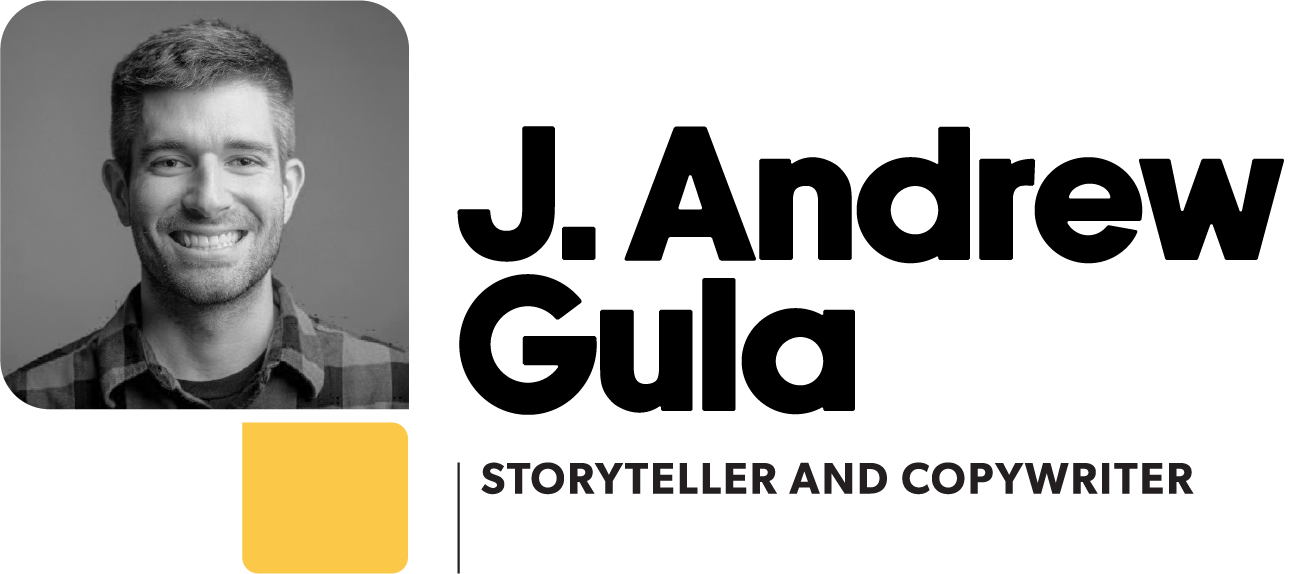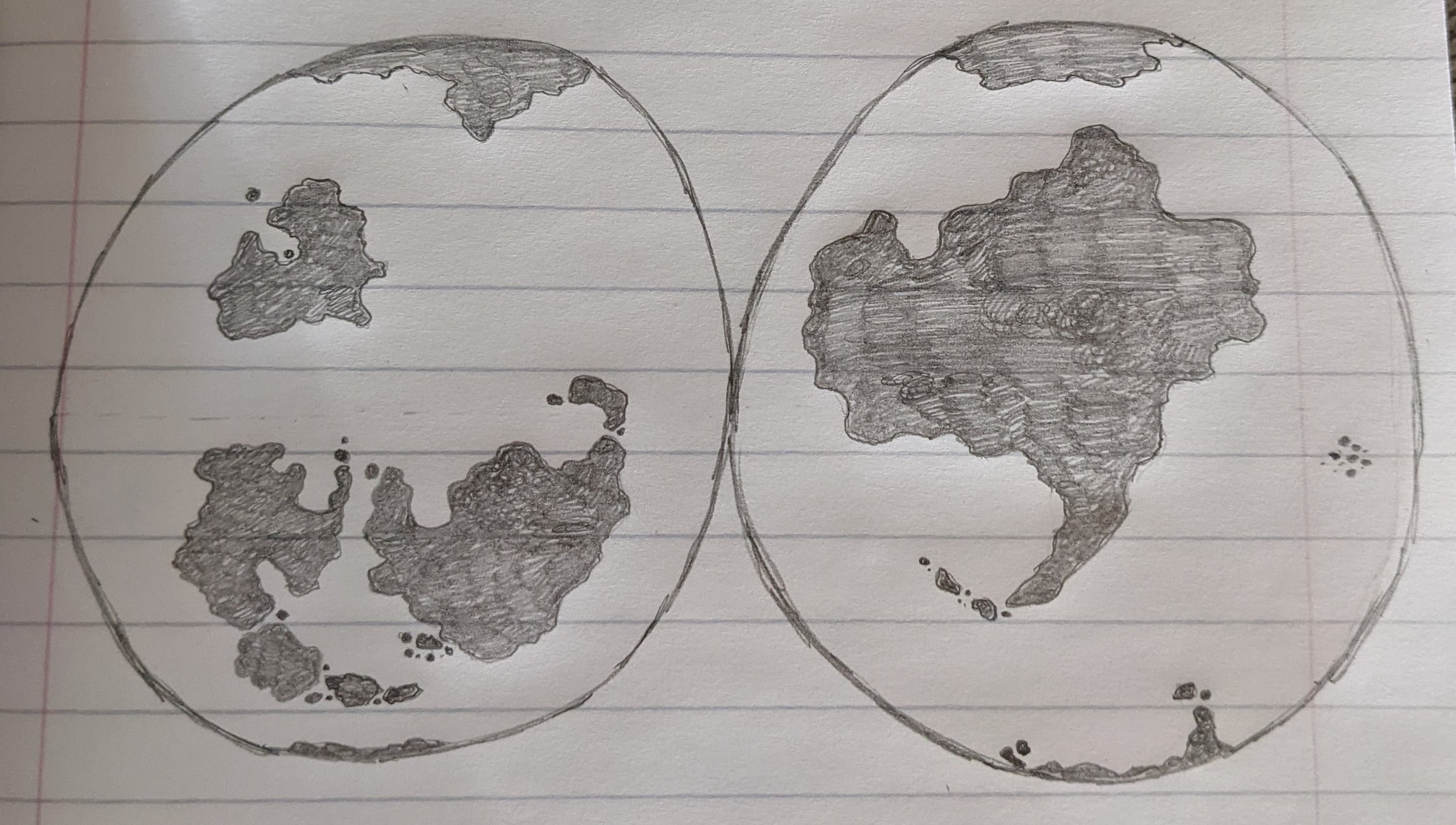The Art of Recycling Ideas
Last week, I talked about the importance of getting feedback for creative projects. More specifically, of using Reddit and its communities of passionate worldbuilders and mapmakers to get valuable criticism and/or praise for my work-in-progress map.
As I explored how my fantastical land could fit into a larger world, I pulled out an old notecard on which I’d sketched out a collection of continents. This card dates back 15 years to sitting in a college lecture. (I can even remember the classroom!)
At that time, I was still writing my first three novels, The Outlanders Trilogy, but my mind had already shifted to “What’s next?” for an ongoing saga. I had a lot of ambition for that project, a 10-novel epic that spanned 500 years in-world… but I never got further than book 4, and so most of that work fell by the wayside.
Now, as I sit here today and think about how to build a new world from scratch, I can appreciate just how immense that undertaking is. It could take me years to puzzle out — probably a decade at least, and that doesn’t even take into account the time spent writing it.
And so I find myself thinking about those old stories, past projects from across my years of creative writing. Could I find some way to repurpose all of those unused ideas that I know I care about? It seemed like an idea worth exploring, at least.
A new home for old ideas
I wrote The Outlanders Trilogy between 2007 until 2012, and continued working on the series through 2013. All of those stories took place in a land called Teragon, but I’d begun laying plans for the next trilogy, which would take to the high seas and explore other lands.
Hence the original world map sketch. And for the sake of explanation, I’ll include that notecard as a side-by-side with my new version I shared last week:
(Actually, after seeing how my old lands look in the left map, the gradual evolution of Varheim from one land to two sub-continents and now to a larger cluster isn’t all that different from the “sister lands” idea I had back in 2010!)
Now, the large continent that dominates an entire hemisphere is Myden. When I first sketched the map, it felt like an impossible challenge to populate such a vast space. But I remember thinking up the idea for that continent during a long drive before a family vacation.
The premise was simple: What if there was a land where Elves were evil? Not necessarily malicious, like orcs or goblins in most fantasy stories. But what if they were a hedonistic, imperialist culture like Ancient Rome? What if Elven legions conquered the world, and were led by an undying god-king?
With that idea, Myden became the backdrop for a lot of different stories…or at least, story ideas. I have pieces of three different novels in Myden, and half a dozen short stories, and dozens of pages of notes and ideas. But nothing ever “stuck.” I think part of that is because fantasy has always been a means of escapism for me, a place to tell stories with themes of optimism and adventure and camaraderie. A world of misery is just a bit too “grimdark” for my personal tastes.
Flashforward now to my current project. I wanted to expand the land of Varheim into the world of Varheim, and I had two continents absolutely bursting with history and ideas. What if I could take Teragon and Myden, rework a few things, and tie them into this project to fill out the map?
What if the world of Varheim could become a foundation for all the fantasy stories I’ve ever written, and also a blank canvas for all the future stories I still have to tell?
It sounded too good to be true…but I tried it anyway. What did I have to lose?
Round pegs in square holes
One funny thing about the “round peg in a square hole” idiom is that, in many cases, a circle can actually fit inside a square. And I quickly realized that the worlds I’d made weren’t unique jigsaw puzzle pieces, but individual pegs. (Think of them as pillars, and I built worlds and stories on top of them.) And with a little bit of work, those pegs could be much more versatile than I expected.
After two weeks of brainstorming and a few days of writing, I found a way to make it work. But it all started with exploring the origins of the world. Not just the mythology of it, but also the literal “creation story” of the planet, and the solar system too. It’s the sort of context that helps me as a writer but won’t ever be information that readers need or characters discover.
If you’re not a writer or worldbuilder, that may sound bizarre. Why would I spend so much time and effort crafting pieces that nobody will ever know except me? The reality is that thinking through all of these details actually provided color and vibrancy to the world — things I needed in order for Varheim to feel like a real place I could see in my mind. I’ve always been a “visual” writer, often imagining and directing scenes in my mind. Being able to lose myself in the world is important, almost like a superpower. And the last time it happened, I wrote four novels in four years.
So, yeah, I think it’s more than worth the extra effort. And in addition to creating a solid foundation (both narratively and in terms of the “mechanics” of how magic would work), this endeavor also gave me new ideas for how to tie my three “universes” into one.
In short, I found the experience to be enormously valuable, even more so than drawing maps. And we all know how I feel about making maps…
Speaking of which, I need to dedicate some time (or probably an entire week) to remake these hand-drawn sketches in Wonderdraft. Once I get a digital, high-quality version, I’ll be able to start using terrain tools and territory markers to piece together the whole of Varheim.
It’s exciting, and I’m not sure I’ve been this inspired about a project since I started No Room in the Sky. I may not achieve my writing goals for the year (although I am, currently, on track) but if it leads to more consistent and passionate writing, then that’s a trade-off I’ll happily make.



